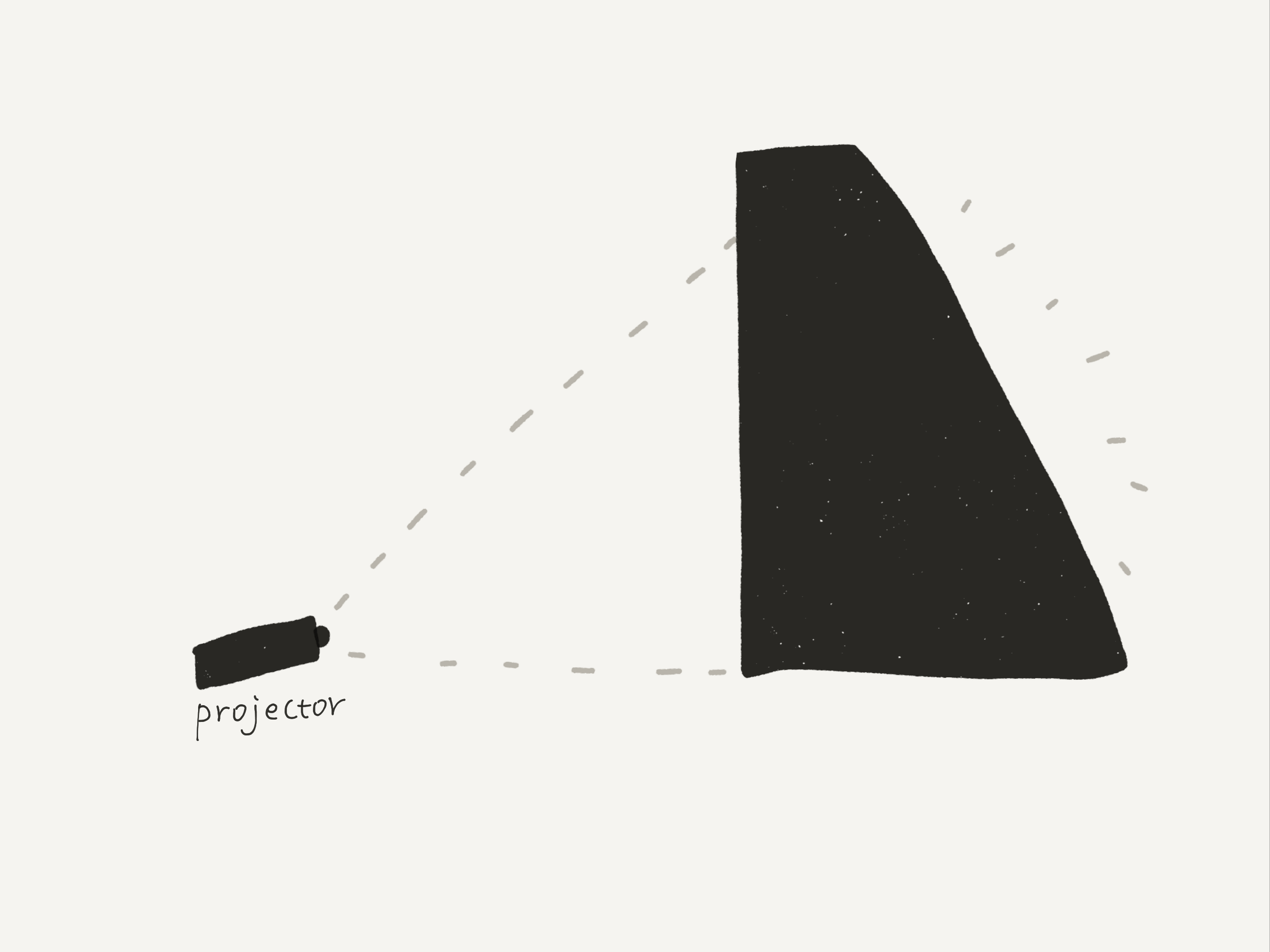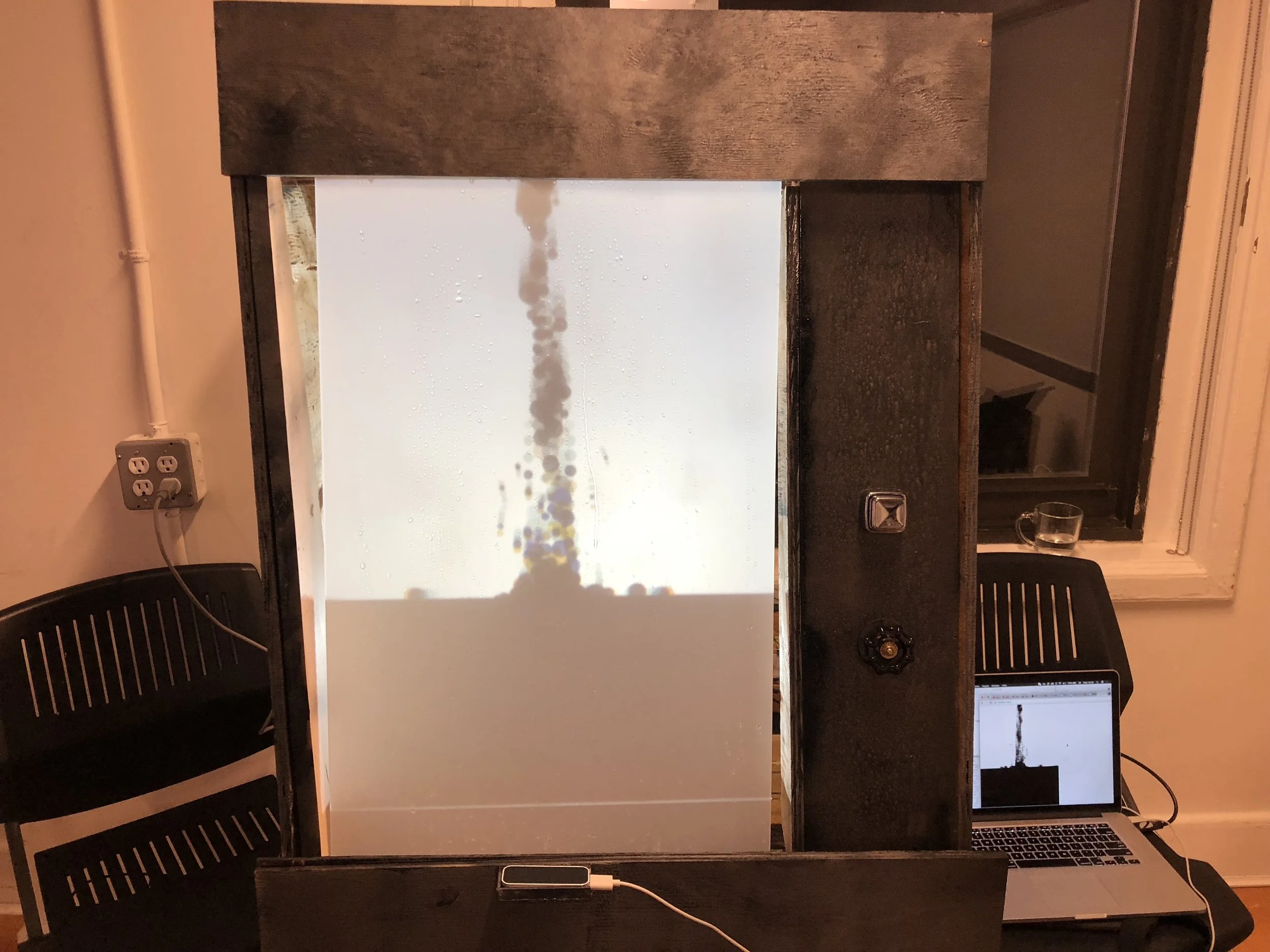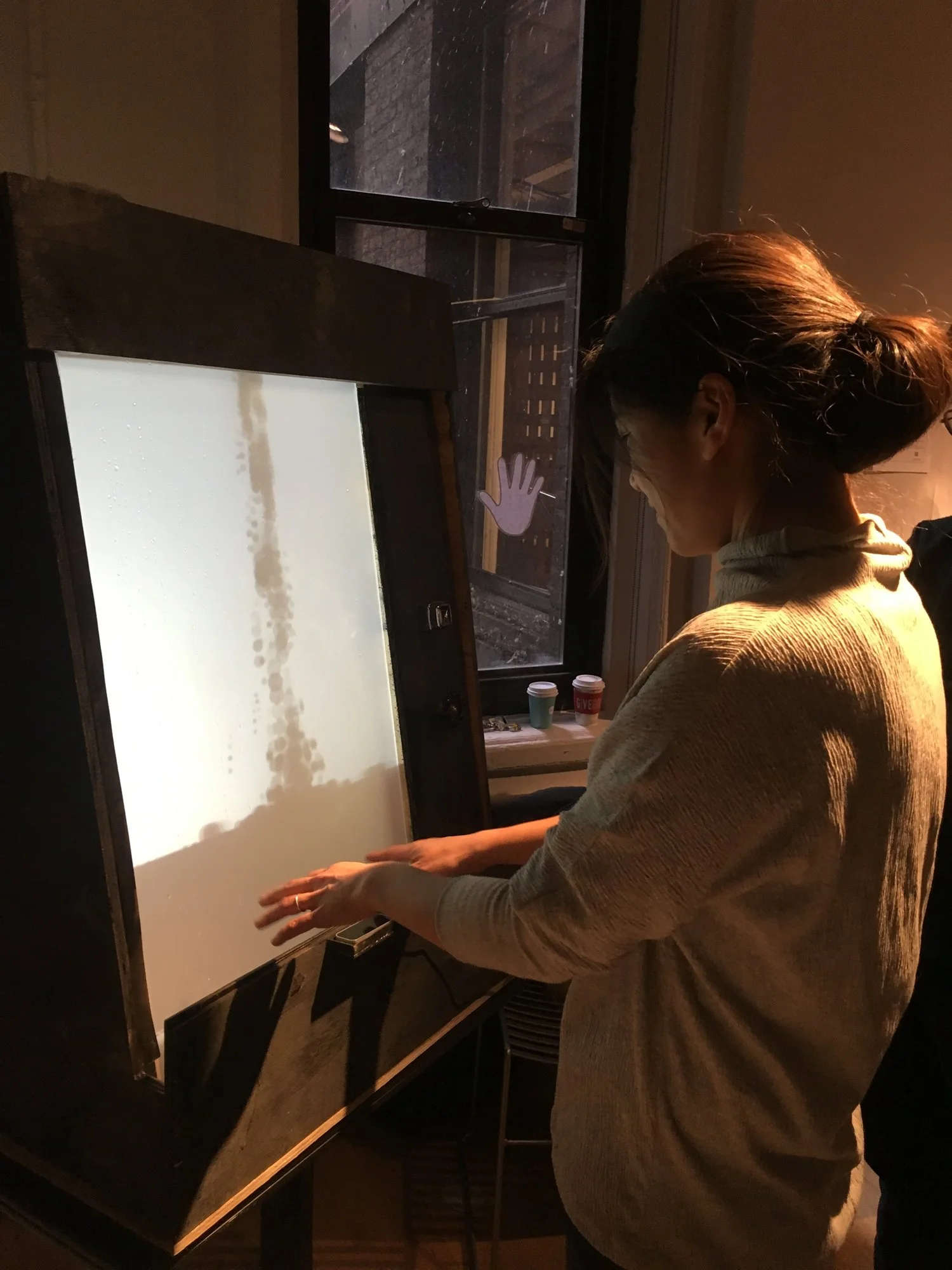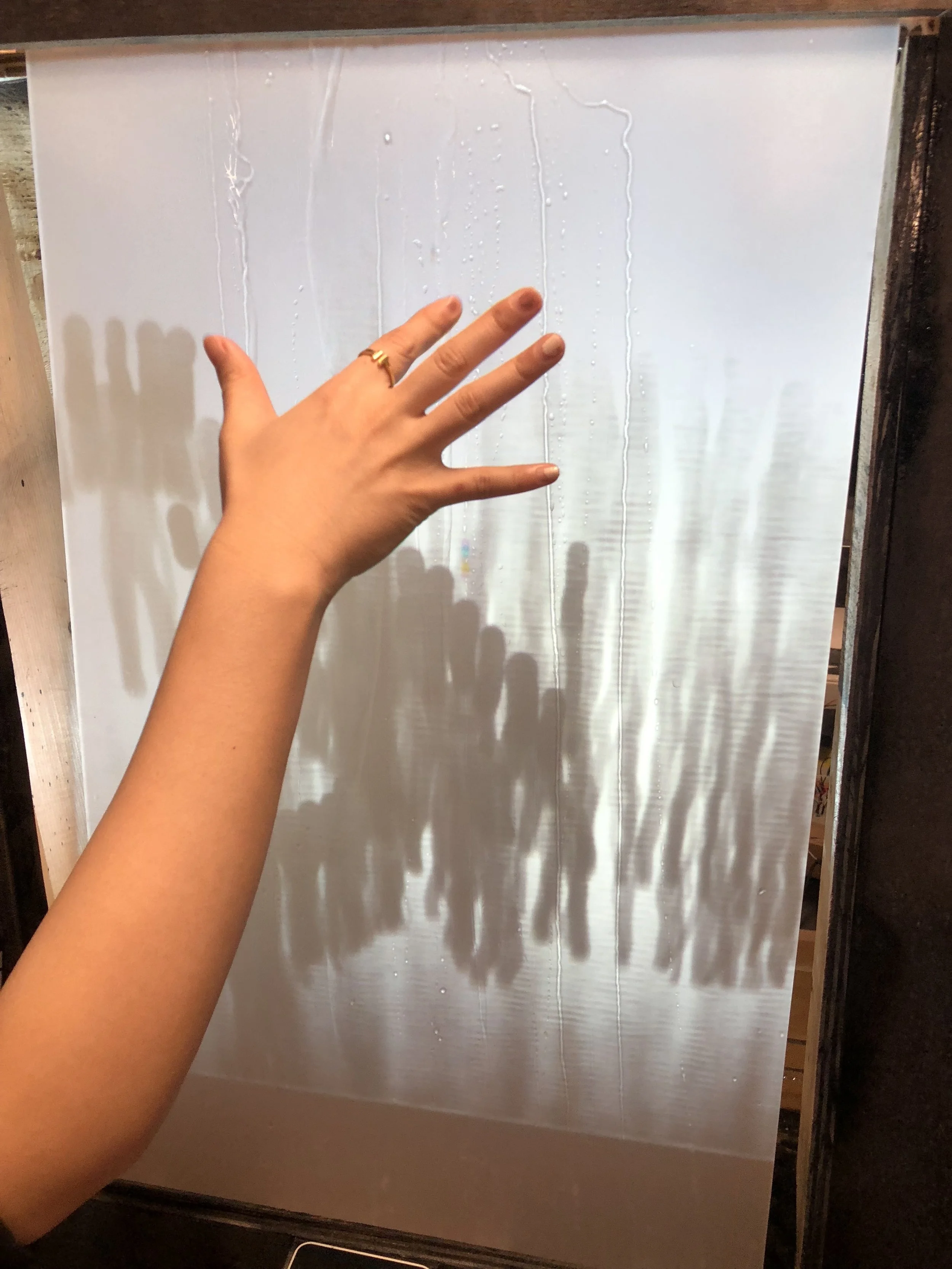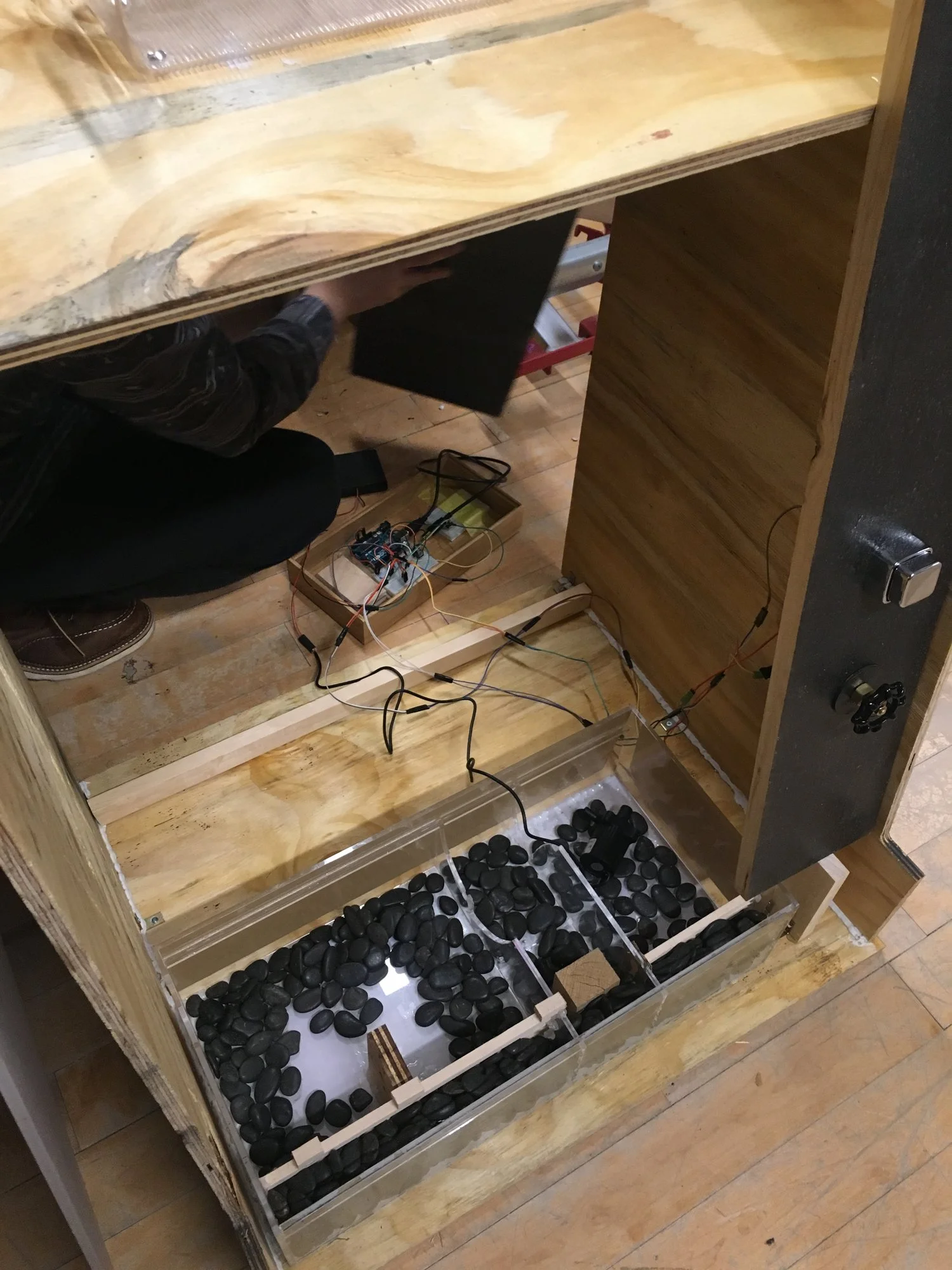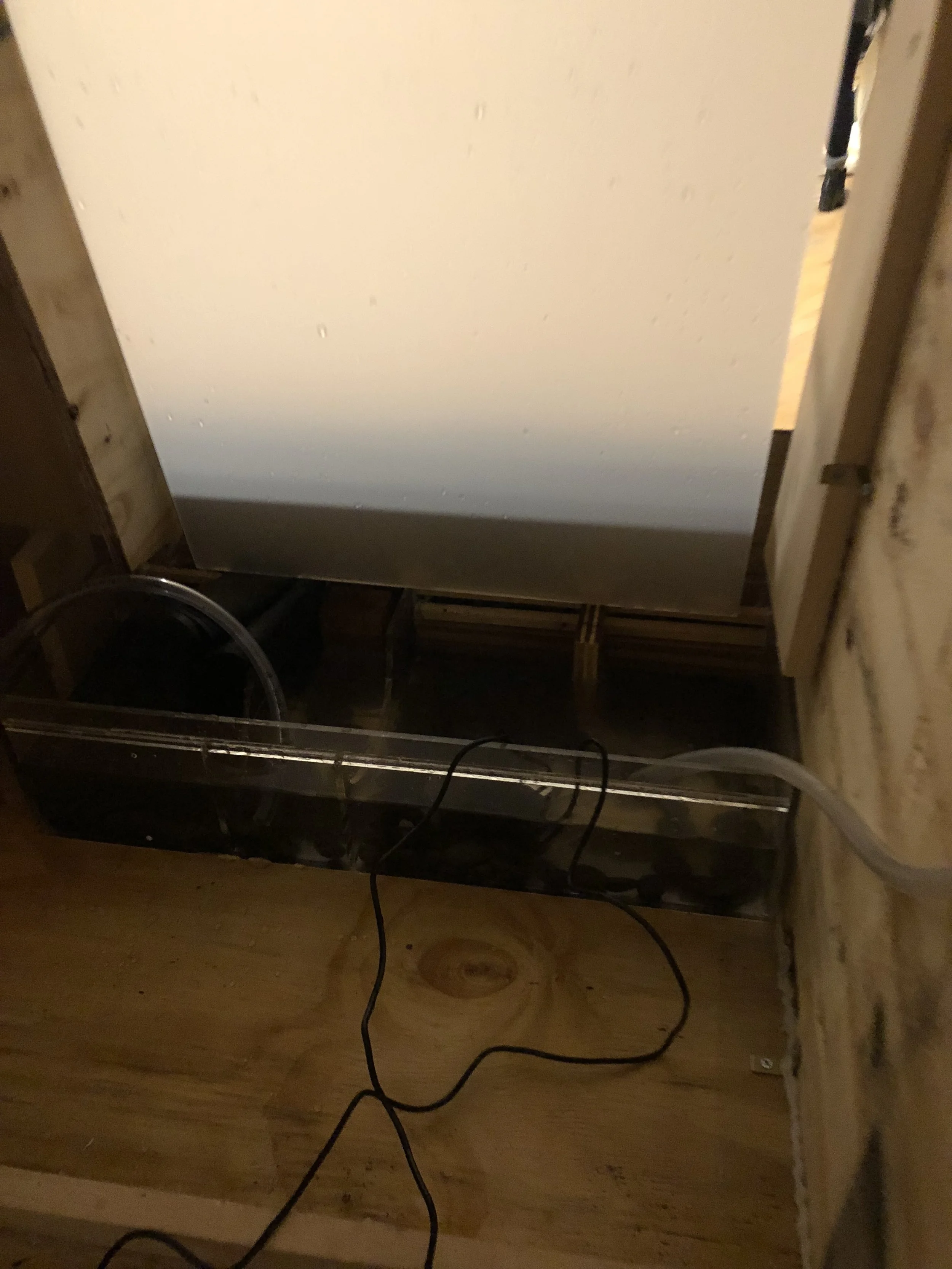Waterfall
2017.12 | Collaborate with Joohyun Park
Exhibition
ITP Winter Show 2017
Tags
#Interactive Installation
#Physical Computing
#Creative Coding
#Actual Water
Toolkit
Arduino, P5.js, Leap Motion
My Contribution
Idea Development
Interaction Design
Programing ( P5.js, Arduino, Leap motion)
Fabrication
Waterfall is an interactive installation, invites people to virtuality and reality, or somewhere between.
Due to my experience of learning Oriental painting when I was younger, I'm obsessed with ink and water, since they make people feel relaxed and peaceful. And this experience is where my inspiration comes from.
As to this installation, we want to explore and play with the blurry boundary of digital and physical. What feelings would users have when they physically rotate a water valve, controlling digital water? Or when they see ink is washed away digitally, while they are touching the real water? If this kind of sense dislocation would endow people a richer sensory experience?
When I was working on the project, I keep asking myself what kind of interaction can correspond with people's daily experience that they can easily get how to play with and at the same time there is something dislocated and unexpected that could intrigue people.
Therefore I chose the real water valve and the real water lever (the button-like square above the valve) to give users a more intuitive sense that the valve is used to control water, and the lever can flush water. What is working inside of them are just sensors.
Also, water will spill if it is full, like we expected, but instead of spilling digital water, I designed to make it spill real water which is controlled by Arduino. It's an unexpected&expected point. Similarly, at the second layer of interaction, what people draw digitally by their hands are gonna be "washed away" by real water and people can control the real water through the water value, if turn off the real water, what they draw are going to stay. And that is another unexpected&expected scenario. So these multiple layers of interaction will enhance the experience for users of exploring the boundary of the digital world and the real world.
How It Works
Basically, the whole system can be divided to two parts- digital water (which is programed in p5) and real water (which is controlled by Arduino). These two parts work together and blurring the boundary of digital and real.
Prototyping:
Simulation on web:
Winter Show Pics
See more details and thoughts on my blog.


